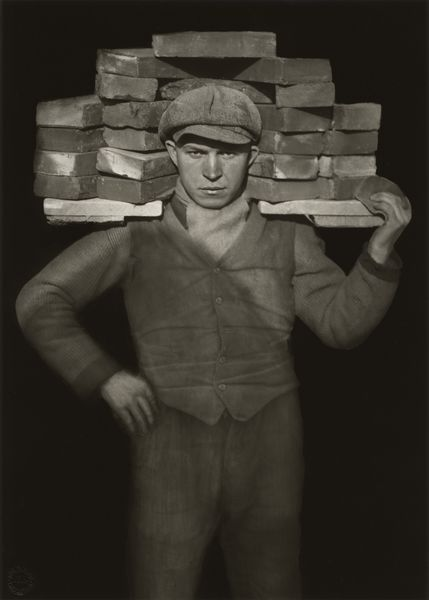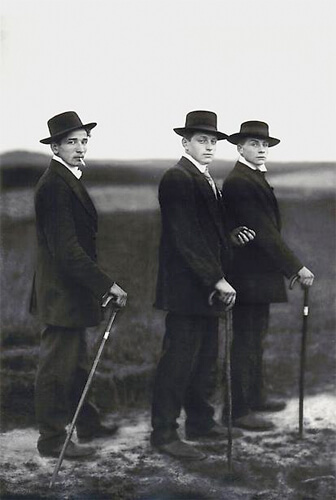August Sander biography:
Sander has been described as “the most important German portrait photographer of the early twentieth century”. His work includes landscape, nature, architecture, and street photography. however, he is best known for his portraits and his series ‘People of the 20th Century.’
The environmental factor of August Sander’s portrait meant that the subjects in his photos would always be surrounded by the environmental they work in, in the background of the full-body shot, so their occupation was clear to the viewers.
His photographs:
After photographing local farmers near Cologne, he was inspired to produce a series of portraits of German people of different lives. He was committed to ‘telling the truth’. His portraits were usually photographed straight on in natural light, with facts of the sitters’ class and profession alluded to through clothing, gesture, and backdrop. At the Cologne Art Society exhibition in 1927, Sander showed 60 photographs of “Man in the Twentieth Century,” and two years later he published ‘Face of Our Time’.


Sanders’ photographs are mostly black-and-white portraits of Germans from various social and economic backgrounds: aristocrats and gypsies, farmers and architects, bohemians and nuns. The portraits often include familiar signifiers to help the audience know who they were , but sometimes the visual clues to a subject’s “type” are not so obvious, leaving the title of the work and its placement in one of Sander’s categories to illuminate the subject’s role. Each photograph is a portrait of an individual, and at the same time an image of a type.

With this photo, you can easily see the leading lines which are the walking sticks, leading lines help direct your eyes to the main focus of the photo. in this photo there are three wealthy men standing next to each other with walking sticks and suits, this signifies that they are wealthy and posh compared to other people that August sander has photographed. the posture of the men also help to create the idea that they are smart men due to them standing up straight and not slouching. the men are also looking straight into the camera to help with the firm eye contact.

- Who is in the photo?
– August Sander – Handlanger (Bricklayer) – 1928
- how are they posed?
– formal (posed) with relaxed facial expression
- how are they framed?
– Full body
– Deadpan angle
- what is their gaze?
– Eye contact > engagement with the camera
- Colour
– Black and white
Typologies
what is a typology?
- Typology is a a term that we use in photography that, in simple terms, is the study of types. It can be used to see and represent similarities and differences in images.

This is an example of August sanders typologies.
